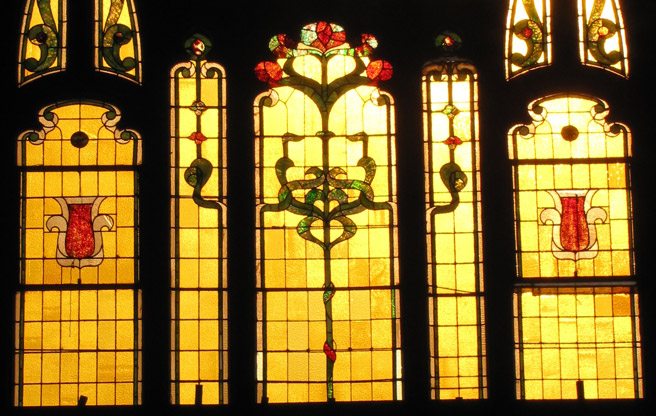Six buildings worth seeing at Doors Open Toronto 2014

Doors Open Toronto is back on May 24 and 25, and this year’s edition of the annual festival of socially acceptable snooping is promising free-of-charge access to some 155 buildings, 40 of them new to the roster and many of them normally inaccessible to the public. The theme for 2014 is “Secrets and Spirits,” and so attendees can expect a preponderance of hidden passageways and dark histories.
“It’s kind of an examination of the darker edge of Toronto the Good, any secret spirits, ghosts, secret spaces, mysteries, or scandals,” says Kerri MacDonald, a Doors Open event supervisor. “People have been asking about doing a haunted theme for a couple of years. We thought we would be definitely interested in doing that. And then we thought ‘haunted’ is a bit narrow, so we opened it up to the whole ‘secret spirits and mysteries’ idea.”
But you don’t have to be a fan of the cloak and dagger to get something out of Doors Open Toronto 2014. Here are six can’t-miss picks.
For ghost hunters: the Gibraltar Point Lighthouse
This limestone column on the southwestern tip of the Toronto Islands is one of the city’s oldest buildings, and one that will be forever linked to the mysterious death of its first inhabitant, J. P. Radelmüller. The circumstances remain murky, but on January 2, 1815 the German-born keeper was found dead at his post. The death went unsolved, and spicy tales of hauntings and ghostly apparitions have been linked to the building ever since. Doors Open visitors will be allowed to climb the 90 stone steps to the top and look out over the islands.
480 Lakeshore Ave., details here.
For the infrastructure nerd: the High Level Pumping Station

Built in 1906, the High Level Pumping Station has been busily hauling cool, fresh Lake Ontario drinking water to the neighbourhoods of north Toronto for well over a century. It’s the oldest facility of its kind in the city, and it’s a good alternative to the popular R. C. Harris Water Treatment Plant, which is participating in Doors Open again this year. The winding roads in the area surrounding the pumping station are a relic of Castle Frank Brook, the original source of local drinking water. Inside the brick building, which was built in several phases on top of the buried stream, visitors can examine a decommissioned steam engine from 1909 and inspect the current pumping system at work.
35 Poplar Plains Rd., details here.
For fans of secret passageways: St. John’s Presbyterian Church

St. John’s Presbyterian Church on Broadview Avenue promises visitors access to an untouched sanctuary lined with hidden passages. There’s a concealed attic full of forgotten treasures, including some stained glass, original wood trim, lighting fixtures and the pipe organ used during church services. For the non-claustrophobic, a partially excavated basement is open for inspection down a flight of stairs. Visitors who drop by during worship (11:00 Saturday and Sunday) will be rewarded with an explanation of the 20-foot painting in the narthex (that’s the entrance hall).
430 Broadview Ave., details here.
For the modernist: University of Toronto Scarborough’s Andrews Building

Robarts Library might be the University of Toronto’s best-known brutalist mass, but hiding out in the forest at the school’s Scarborough campus is Australian architect John Andrews’ 1960s utopian science-and-humanities wing. Andrews is best known for designing the CN Tower with WZMH Architects, but his multi-level concrete structure, with its dramatic hillside terrace (it made the cover of TIME magazine in 1967) is well worth a visit. Inside the hulking structure there are secret alcoves, hidden staircases, and indoor balconies.
1265 Military Trail, details here.
For the transit fan: the TTC’s Russell carhouse

The TTC is offering a peek inside its Russell carhouse, a Queen Street East facility that serves as one of three streetcar storage-and-maintenance areas. As a bonus, a test model of one of the TTC’s new low-floor streetcars will be open to the public, as will two of the TTC’s restored historic vehicles. Even the building itself has some heritage appeal: the carhouse has ties to the long-defunct Toronto Railway Company.
1403–1433 Queen Street East, details here.
For those with kids to distract: the John Street Roundhouse

In the long shadow of the CN Tower, the John Street roundhouse is a relic of a time when almost all of Toronto’s downtown waterfront was a soot-covered tangle of railway sidings and factories. The semi-circular building used to turn Canadian Pacific locomotives, and a few of the mighty machines are still on display, including a CPR Northern that used to make overnight passenger runs between Toronto and Montreal. There’s also a steam-train simulator and a ride-on miniature locomotive. Steam Whistle Brewing is right next door, in case it’s that sort of day.
255 Bremner Blvd., details here.
(Images: Courtesy of the city, except where indicated)





